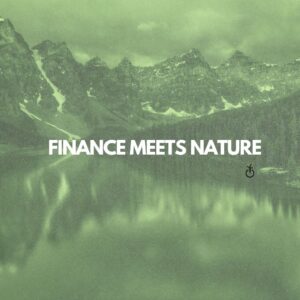In an era defined by mounting environmental challenges, the need for sustainable solutions has never been greater. For this reason, a main commitment when building a start-up could be focusing on the idea of innovation that meets sustainability, thus offering eco-friendly solutions both in terms of products and services.
The startup sector is in constant expansion. Among the increasing number of startups, there is a growing trend of green startups, which reached a level of 35% in 2023 according to the Green Startup Monitor. Nonetheless, even if the number of green startups is getting higher, the availability of funds is shrinking, compared to the previous years, which is a big challenge for these emerging companies.
Being a sustainable business is becoming a priority for an increasing number of businesses. Creating startups comes with many challenges and costs, and being sustainable can be an addition to the already high number of difficulties. However, it is demonstrated that setting up a startup as sustainable from the start also has its benefits on the long-term financial viability of the company and its reputation.
Benefits of sustainability in startups
Cost saving: sustainability leads to the reduction of waste and increased efficiency in the use of energy, which ultimately can reduce costs.
Credentials: a good reputation can bring the company more customers, talents, and funding.
ESG requirements: investors may ask for reports on sustainability. Additionally, when working with other companies, it is necessary to consider their need to comply with some ESG requirements, and hence be ready to also comply with the rules of different markets.
Investors: funds seeking to invest in sustainable companies are increasing in number and capacity, attracting them is fundamental for a company to grow.
Criteria for s sustainable startup
There are some criteria to establish a startup as a sustainable business. Initially, it is necessary to choose which product or service to provide and to understand how it is a solution for people to be better off, and how it reduces the ecological impact. Moreover, the company should handle the impact it has on other economic subjects, such as investors, suppliers, or even the community at large.
On the other hand, risks must be tackled, especially those related to financial and regulatory requirements. Also, the firm should understand if it is worth it in terms of revenues and gains, thus if the project will produce a positive profit since the investments may be substantial.
Lastly, once the company is established, it is necessary to set some environmental and social goals that must be reached in the long-term, but also a system to measure the success ongoing.
Another aspect to analyse is how to improve resources and capabilities in a sustainable pattern. For example, one way could be to improve radical resource productivity, through recycling and reutilization. Moreover, this can be associated with the ecological redesign which concerns not throwing away but giving new life to the products. It is a type of flow economy that allows the remanufacturing of returned or unused products.
Finally, this would lead to the setting up of a pattern of responsible consumption that concerns the education of consumers to consider the location of origin of the product, but also how much their life cycle has an ecological footprint and respects sustainable criteria.
An example of a startup that has sustainability as its core value is Krill Design, which creates eco-design by recycling organic waste from other companies. In particular, what the company does is contract with companies in the Food and Beverage sector, which have plenty of by-products from their production processes. These companies give the startup the organic waste they have and then the startup uses them to create a biodegradable and bio-based polymer which is then used to create some innovative design products. These products are designed based on the needs of the company where the Food and Beverage waste comes from, and they can serve various types of functions. In the end, these products are given to the company, giving life to a truly circular process.
Another innovative aspect of the firm is the fact that the products are usually made through 3D printing. When the startup was first born, the funders were particularly interested in this fascinating technology which they were exploiting on a smaller scale. Then, when they created the startup, they developed their own biomaterial which they started to use in the printing process, giving life to a project which aims at creating value in a sustainable way.
With sustainability being such an important concern in today’s society, it is an encouraging signal to see so many small businesses caring about this topic and incorporating sustainability in their business model. Setting up a sustainable startup has many challenges, but it is ultimately beneficial not only for its positive impact on society but also for the business itself.
By Anastasia Binando and Alice Sleiman
Sources:
https://fastercapital.com/content/How-To-Create-A-Sustainable-Startup.html https://www.naturalstep.ca/5-criteria-for-a-sustainable-business-model




